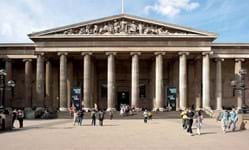In his element at Christie’s
Paul Whitfield, who died on May 29, worked at one time or another for all four major London auction houses.
Fifty years ago such movement would have been impossible; in more recent times it has become commonplace, although few auctioneers, if any, have followed Paul in achieving the complete set.
I first met Paul in 1965 on his arrival at Christie's where he soon thrived in the expanding furniture department under Anthony Coleridge.
Furniture catalogues in those days, as they do again today, contained a wide range of material including carpets, bronzes and other sculpture together with decorative items of all kinds.
Paul, gregarious, quick-witted, with a good eye and an inquisitive mind, was in his element, rising rapidly to be appointed to the board of directors in 1970. Although young, he was thus an obvious candidate to run the new Christie's South Kensington created from the old Debenham and Coe in the Brompton Road, in 1975. Here he worked closely with Bill Brooks, the legendary head of Debenham and Coe.
“We laughed a lot thanks to his liking for the absurd and ability to mimic the voices of former senior colleagues
Management was a talent which Paul had to acquire with this new role but it was still his innovative spirit, together with his love of objects, that really drove him.
He was then picked out for his corporate skills, moving back to King Street in the late 1970s to become managing director, where he took over from Guy Hannen.
Paul left Christie’s in 1986 with Christopher Elwes, for Bonhams.
Details of his subsequent career from Bonhams to Sotheby’s and finally as a consultant to Phillips must be left to others. I remained in frequent touch with him (while, naturally, observing rules of confidentiality).
We shared a love of architecture for which he was the perfect travelling companion. No detail or emblem high up on a façade escaped his eye and nor did the knowledge of what it stood for; and we laughed a lot thanks to his liking for the absurd and ability to mimic the voices of former senior colleagues as well as their mannerisms and catch-phrases.
Paul’s catholic taste was evident in his own collection of objects, pictures and miscellania. His love of the Arts & Crafts movement later drew him back to his childhood home of Chipping Camden where, as a trustee of the Guild of Handicraft Trust, he provided invaluable support to the Court Barn Museum, devoted to craft and design in the north Cotswolds.
Paul will be greatly missed by a very large number of the London art world with whom he had come into contact over his long and varied career.
John Lumley, honorary vice chairman, Christie’s
Instrumental at Bonhams
An urbane man, Paul will be remembered for his catholic taste and the breadth and variety of his knowledge.
As a specialist, he had principally been involved with sculpture and objects, but his interests ranged much wider than this and he was just as comfortable discussing Old Master paintings, furniture, antiquarian books or porcelain.
He came to Bonhams from Christie’s in 1987 with Christopher Elwes and remained with the company for around 10 years. Together they were instrumental in bringing a new vision and energy to the company, inviting the late Duchess of Devonshire and Peregrine Pollen to join the Bonhams board, and widening both the company’s range of departments and the network of offices and representation.
Their concept of forming an association with other independent auction houses in Europe and the US – the AIA – gave the members an international platform for marketing and previews.
Caroline Oliphant, group head of pictures, Bonhams












